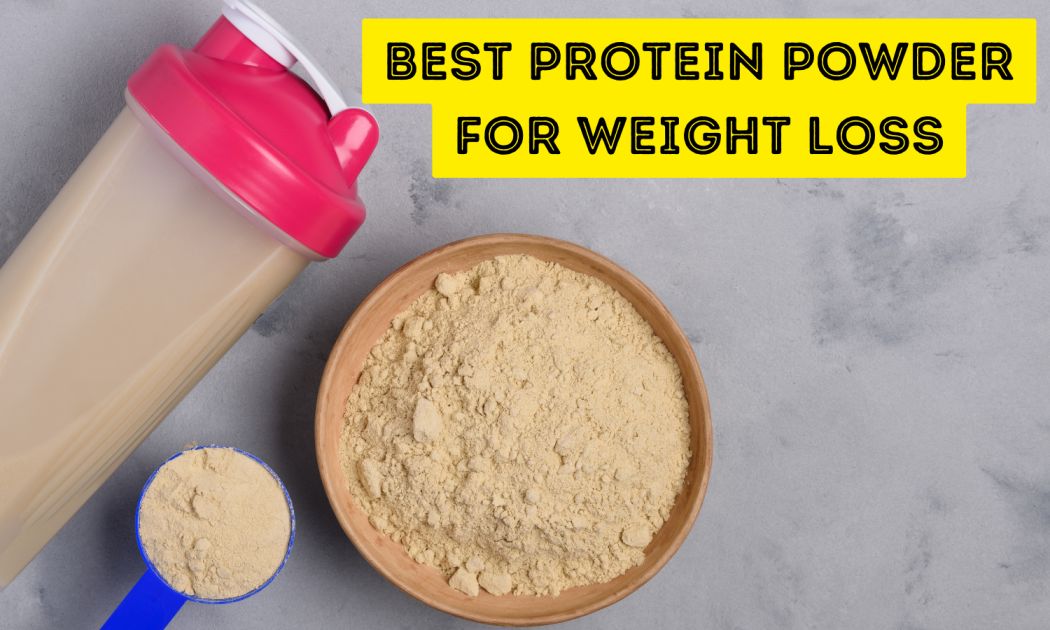Are you curious about the potential benefits of incorporating Papaya into a diabetes-friendly diet? If you or a loved one are managing diabetes, making informed choices regarding food is crucial. In this article, we will explore the question, “is papaya good for diabetes?” and shed light on the potential advantages of including this tropical fruit in your meal plan. With its rich nutritional profile and various health benefits, Papaya may hold promise as a supportive addition to your diabetes management strategy. So, let’s delve into the topic and discover the wonders of Papaya for diabetes control and overall well-being.
Understanding Diabetes
Define Diabetes And Explain Its Types (Type 1 and Type 2):
Diabetes, also known as the “sugar monster,” is a chronic condition affecting how your body handles glucose, the fancy term for sugar. It’s like having a rowdy gang of sugar molecules causing mischief in your bloodstream. Now, let’s break it down into two main types:
Type 1 diabetes, also called “The Rebel”: Imagine your body’s immune system going on a wild goose chase and mistakenly attacking the pancreas, the organ responsible for producing insulin. Insulin is like the superhero that helps regulate sugar levels in your blood. With Type 1 diabetes, the pancreas becomes a prime target, leaving you with limited or no insulin production. It’s like having a rebellious pancreas that refuses to cooperate, so you’ll need to bring in reinforcements in the form of insulin injections.
Type 2 diabetes, also known as “The Sneaky Intruder”: Picture this: your body’s cells are playing hide-and-seek with insulin, but the cells are just not as receptive as they used to be. This sneaky intruder creeps up on you, often due to genetic factors, sedentary lifestyle choices, and a diet rivalling Willy Wonka’s chocolate factory. When you have Type 2 diabetes, your body generates less insulin may not be as effective, leading to a buildup of sugar in your bloodstream. It’s like having stubborn cells that won’t open the door when insulin comes knocking.
Importance Of Diet And Lifestyle

Now that we’ve met the troublesome duo of diabetes types, it’s time to discuss managing these sugar shenanigans. Picture your diet and lifestyle choices as your secret weapons in keeping those blood sugar levels in check.
Is papaya good for diabetes if we include it in a balanced manner. A balanced diet is like having a well-rehearsed dance routine with the sugar monster. It’s all about balancing carbohydrates, proteins, and fats to steady your blood sugar levels. Incorporating nutrient-rich foods, such as leafy greens, lean proteins, and whole grains, can help regulate those sugar spikes and dips.
But let’s remember the importance of portion control. You don’t want to overwhelm your body with a sudden influx of sugar like a swarm of bees after honey. So, be mindful of your serving sizes and resist the temptation of consuming your plate with carb-heavy treats.
Now, let’s move to the lifestyle aspect of the battle against diabetes. Regular physical activity is like a superhero cape that helps improve insulin sensitivity and keeps those sugar molecules on their toes. Whether it’s a brisk walk, a dance party in your living room, or chasing after your mischievous pet, finding enjoyable ways to stay active is key.
We’re not asking you to be a fitness fanatic overnight! Start small, set realistic goals, and make gradual changes. Remember, even a little victory over the sugar monster is worth celebrating.
So, dear readers, in the never-ending quest to tame the sugar beast, remember that a healthy diet and an active lifestyle are your trusty allies. With a pinch of discipline and a sprinkle of humour, you’ll be well on your way to managing diabetes like a pro. Stay tuned as we dive into the juicy goodness of Papaya and its potential role in this sugar-coated adventure!
Nutritional Profile of Papaya

Nutritional Composition Of Papaya
Ah, Papaya, the tropical treasure that’s as delicious as it is nutritious! Let’s peek at what makes this vibrant fruit a powerhouse of goodness.
Papaya is like a fruit salad of essential nutrients. It’s low in calories but nutritional, making it a guilt-free treat. One of its star features is its water content, which keeps you hydrated and refreshed like a refreshing ocean swim on a scorching summer day.
Key Nutrients Found In Papaya
Regarding nutrients, Papaya is no ordinary fruit—it’s like a treasure trove of health benefits! Let’s uncover the gems hidden within this tropical delight.
First off, dietary fibre. Papaya is loaded with it, making it a fibre champion in the fruit kingdom. Fibre is like the loyal janitor of your digestive system, keeping things moving smoothly and aiding in better blood sugar control.
Now, let’s talk vitamins. Papaya is bursting with vitamin C, just like a superhero with a cape made of citrus goodness. This vitamin not only helps boost your immune system but also plays a role in reducing inflammation and promoting overall well-being.
But wait, there’s more! Papaya is also rich in vitamin A, which is excellent for eye health. It’s like having a personal bodyguard for your peepers, keeping them sharp and focused.
And let’s not forget about vitamin E, the “glow-getter” nutrient. It functions as a potent antioxidant, assisting in protecting your cells from damage caused by those pesky free radicals.
Now, let’s dig into minerals. Papaya contains a healthy dose of potassium, which is like the conductor of your body’s electrical system, helping maintain a healthy heart rhythm and supporting nerve function.
And speaking of nerves, Papaya also provides magnesium, the mineral that keeps your nerves calm and collected. It’s like having a zen master in your bloodstream, helping you stay cool, calm, and collected even in the face of sugar-related challenges.
How These Nutrients Can Benefit Individuals With Diabetes
So, how do these nutrient powerhouses in Papaya benefit those navigating the sugar-coaster ride of diabetes? Let’s find out!
Starting with dietary fibre, it’s like a superhero sidekick for individuals with diabetes. It facilitates a slower rate of sugar absorption into the bloodstream, preventing those sharp spikes and crashes. This means more stable blood sugar levels and a smoother ride on the sugar rollercoaster.
Vitamin C, the immune-boosting ninja, also affects diabetes management. Research suggests that vitamin C may enhance insulin sensitivity and lower the chance of developing complications associated with diabetes.
As for vitamin A, it’s like a guardian angel for eye health, which can be vulnerable in individuals with diabetes. By including Papaya in your diet, you’re giving your eyes an extra layer of protection.
And let’s remember vitamin E, the antioxidant wonder. It helps reduce oxidative stress, a key player in developing diabetes complications. So, adding Papaya to your menu gives your body a fighting chance against those free radicals.
Last is the dynamic duo of potassium and magnesium found in Papaya. These minerals work together to support heart health, nerve function, and blood pressure regulation—areas that can be particularly important for individuals with diabetes.
So, dear readers, with Papaya’s rich nutritional profile, including dietary fibre, vitamins (C, A, E), and minerals (potassium and magnesium), it’s like having a delicious ally in your diabetes management plan. Stay tuned as we uncover why Papaya might be the juicy hero your sugar-slaying adventure needs!
Papaya’s Impact on Blood Sugar Levels

Glycemic Index (GI) And Glycemic Load (GL) Concepts
Ah, the world of the glycemic index and glycemic load—the gatekeepers of the sugar rush! Let’s dive into these concepts and unravel the mystery.
Picture the glycemic index as a carbohydrate ranking system, assigning them a score based on how quickly they raise blood sugar levels. It’s like a popularity contest for carbs, but we’re talking about sugar spikes instead of popularity!
Now, let’s talk about glycemic load. This concept considers both the quality and quantity of carbohydrates in a food. It’s like having a personal assistant to calculate the overall impact of a meal on your blood sugar levels, considering not just the individual carbs but also their portion sizes.
GI and GL of Papaya
Now that we’ve introduced the glycemic index and load let’s see how our tropical friend, Papaya, fits into the picture.
Drumroll, please! Papaya has a relatively low glycemic index, which means it causes a gradual rise in blood sugar levels rather than sending them skyrocketing like a sugar-fueled rocket. It’s like a gentle rollercoaster for your blood sugar—no sudden drops or dizzying highs.
But that’s not all! The glycemic load of Papaya is also quite low. This means that even though Papaya contains some natural sugars, the overall impact on your blood sugar levels is modest. It’s like a responsible sugar party—enough to satisfy your taste buds without causing a sugar overload.
So, if you’re worried about your blood sugar levels going haywire after enjoying some papaya, fear not! This tropical delight has the potential to be a friendly companion on your blood sugar management journey.
Papaya’s Impact On Blood Sugar Control
Now, let’s back up our claims with some scientific evidence! Here are a few studies that highlight the potential impact of Papaya on blood sugar control:
- In a study published in the Journal of Medicinal Food, researchers found that papaya extract showed antidiabetic properties, helping to reduce blood sugar levels in diabetic rats. While further studies are needed to determine the direct impact on humans, this research provides good insights.
- In the publication Planta Medica, another study explored papaya leaves’ potential hypoglycemic effect serves. The findings suggested that papaya leaf extract may help people who have diabetes control how much sugar is in their blood.
- Additionally, a study published in the Journal of Ethnopharmacology investigated the effects of fermented papaya preparation on diabetic patients. The results showed improvements in fasting blood sugar levels and lipid profiles, indicating potential benefits for diabetes management.
While these studies provide initial indications of Papaya’s impact on blood sugar control, it’s important to note that more research is needed to fully understand the mechanisms and confirm the extent of these effects.
Health Benefits of Papaya for Diabetes

How Papaya’s High Fibre Content Promotes Satiety
Oh, the fibre wonders of papaya! This tropical superstar is not just about its vibrant colour and mouthwatering taste—it’s also packed with fibre, which is like the superhero of the digestive world. Let’s explore how Papaya’s fibre content works its magic.
First off, fibre is like a trusty sidekick in promoting satiety. It’s like having a full house of guests at a party—everyone feels satisfied and stays longer. When you consume fibre-rich foods like Papaya, it takes longer for your body to break them down, meaning you feel fuller for longer. No more hunger pangs knocking at your stomach’s door like a persistent door-to-door salesman!
But wait, there’s more! Fibre also helps regulate blood sugar levels. It’s like having a traffic controller at a busy intersection, making sure the cars (or sugar molecules) move smoothly. When you eat fibre-rich foods like Papaya, the sugar is released into your bloodstream gradually. This helps prevent those dreaded blood sugar spikes and crashes, keeping your sugar levels steady like a calm sea on a sunny day.
And let’s remember the digestive benefits! Fibre is like a broom for your digestive system, sweeping away waste and promoting healthy bowel movements. It’s like having a clean and well-organized house party—no mess, no fuss. Including Papaya in your diet, you’re helping your digestive system keep things moving smoothly and avoid unwanted digestive troubles.
Antioxidant Properties Of Papaya
Get ready for a burst of antioxidant awesomeness! Papaya is like a superhero with a cape made of antioxidants, ready to fight against the evil oxidative stress that can wreak havoc on your body, especially for those with diabetes.
Antioxidants are like the body’s shield against free radicals, those pesky troublemakers that can damage your cells and contribute to diabetes complications. Papaya is particularly rich in antioxidants such as vitamins C, E, and carotenoids, like a team of superheroes joining forces to protect your cells from harm.
These antioxidants work by neutralizing the free radicals, preventing them from causing damage and reducing the risk of oxidative stress-related complications. It’s like having a fortress around your cells, protecting them from harm.
So, by including Papaya in your diet, you’re giving your body an extra boost of antioxidant power, helping to reduce the oxidative stress associated with diabetes complications. It’s like having a delicious ally in the battle against evil free radicals!
Anti-Inflammatory Effects Of Papaya
Did you know that Papaya is not just a tropical treat but also a potential anti-inflammatory warrior? Inflammation can be a sneaky troublemaker in diabetes, contributing to insulin resistance and other complications. But fear not; Papaya might have some tricks to combat this inflammation.
Papaya has two enzymes in it called papain and chymopapain have been found to possess anti-inflammatory properties. They’re like the cool and collected firefighters, putting out the flames of inflammation.
By reducing inflammation, Papaya may help increase your body’s sensitivity to insulin, making it easy for your body to utilize glucose effectively. It’s like having a traffic-free road for insulin, ensuring the smooth transportation of sugar molecules to where they need to be.
Additionally, the anti-inflammatory effects of Papaya may help alleviate other diabetes-related conditions, such as cardiovascular issues and nerve damage. It’s like having a superhero team fighting off the villains of diabetes complications.
Portion Control and Moderation

Importance Of Portion Control
Ah, portion control, the superhero of the dinner table! When it comes to enjoying delectable Papaya while managing diabetes, keeping our portion sizes in check is essential. But don’t worry my friends; it’s not about depriving ourselves but finding that sweet spot of balance.
Papaya might be a fruity delight, but it still contains natural sugars that can affect blood sugar levels. So, it’s crucial to enjoy it in moderation, just like a treasure that should be savoured but not hoarded.
By practising portion control, we can relish the juicy goodness of Papaya without sending our blood sugar levels on a wild rollercoaster ride. It’s like having a sugar-savvy superhero by our side, ensuring our sugar levels remain steady and stable.
Serving Sizes And Frequency Of Papaya Consumption
Now, let’s talk specifics! How many papayas can we indulge in without tipping the scales wrong? Fear not; I shall be your fruity guide through this portion control maze.
Regarding serving sizes, aim for about 1 cup of cubed Papaya. It’s like having a delightful fruity portion that fits snugly in your hand. This portion allows you to enjoy the tropical flavours while monitoring your sugar intake.
But how often can we venture into papaya paradise? The key is to include it in a well-balanced meal plan and not go overboard. Enjoying Papaya a few times a week is a sweet spot to aim for. It’s like having occasional rendezvous with your fruity friend, allowing you to relish its benefits without overwhelming your taste buds.
Remember, variety is the spice of life, so mix things up by including other fruits, vegetables, proteins, and whole grains in your meal plan. It’s like having a delicious potluck where Papaya mingles with other nutritious buddies, creating a harmonious and balanced feast for your taste buds and blood sugar levels.
Incorporating Papaya Into A Well-Balanced Meal Plan
Now that we’ve mastered the art of portion control and frequency, let’s explore some delicious ways to incorporate Papaya into a well-balanced meal plan. After all, variety is the fruit of life!
Start your day with a tropical twist by adding Papaya to your morning yoghurt or oatmeal. It’s like a sunny burst of flavour that jumpstarts your day on a fruity note.
For lunch, why not whip up a refreshing papaya salad? Toss some crisp greens, juicy papaya cubes, a squeeze of lime, and a sprinkle of nuts for that extra crunch. It’s like a symphony of flavours dancing on your taste buds.
As for dinner, get adventurous and try a fruity salsa with grilled fish or chicken. Mix some papaya with fresh herbs, a splash of lime juice, and a hint of chilli for that perfect blend of sweet, tangy, and spicy. It’s like a fiesta in your mouth that will leave you craving more.
And let’s remember dessert! Indulge in a guilt-free treat by enjoying a simple papaya sorbet. Blend frozen papaya chunks with a squeeze of lemon and a drizzle of honey, and voila! It’s like a refreshing creamy dessert that satisfies your sweet tooth without sending your sugar levels into a frenzy.
Precautions and Considerations

Guidelines Regarding Papaya Consumption
While Papaya can be a delightful addition to a diabetes-friendly diet, it’s important to be aware of a few considerations. Don’t worry, my friends—I’ve got your back and will help you navigate these potential concerns like a seasoned explorer!
Firstly, Papaya, like other fruits, contains natural sugars. Despite having a comparatively low glycemic index and load, monitoring your portion sizes and overall carbohydrate intake is still crucial. It’s like enjoying a slice of papaya paradise without getting carried away in a sugar-induced frenzy.
Secondly, some individuals may experience increased blood sugar levels when consuming certain fruits, including Papaya. Each person’s response to different foods can vary, so monitoring your blood sugar levels after consuming Papaya and determining how it affects you is important. It’s like being your blood sugar detective, closely watching how your body reacts to the fruity goodness.
Lastly, suppose you have any specific concerns or medical conditions related to diabetes, such as gastroparesis or kidney issues. In that case, it’s essential to consult with your healthcare provider before incorporating Papaya into your diet. They can offer you individualized advice depending on your unique health needs. It’s like having a trusty diabetes partner who knows your health journey’s ins and outs.
Possible Interactions With Medications Or Allergies
Ah, the delicate dance between Papaya and medications or allergies—let’s unravel this tangled web, shall we?
Firstly, suppose you’re taking any medications, especially those for blood sugar control or thinners. In that case, it’s important to be aware of potential interactions. Papaya contains certain enzymes that may interfere with the metabolism of certain medications, affecting their efficacy. It’s a friendly reminder to keep your healthcare provider in the loop about any dietary changes to ensure a harmonious coexistence between your medications and papaya adventures.
Additionally, suppose you have known allergies to fruits or latex. In that case, you may be at an increased risk of developing an allergic reaction to Papaya. It’s like having a warning sign for those with a sensitive fruit radar. Suppose you suspect an allergy or experience symptoms such as itching, swelling, or difficulty breathing after consuming Papaya. In that case, it’s crucial to seek immediate medical attention.
Remember, my friends, everyone’s medical history and medication regimen are unique. So, it’s always wise to consult you. Consult a certified dietician or healthcare professional regarding potential interactions or allergies for specific guidance. They can guide you through the labyrinth of medications and ensure your papaya rendezvous remains delightful and safe.
Consulting A Healthcare Professional

Let’s discuss the importance of seeking professional guidance before making significant dietary changes, including incorporating Papaya into your diabetes management plan.
Your healthcare provider, dietitian, or diabetes educator are like the superheroes of the medical world, armed with knowledge and experience to guide you on your health journey. Before making any substantial changes to your diet, it’s wise to consult with them to ensure it aligns with your specific health goals and needs.
They can provide personalized advice, considering your current health status, medication regimen, allergies, and individual preferences. It’s like having a compass that points you in the right direction, helping you confidently navigate the vast sea of dietary choices.
By consulting a healthcare professional, you gain peace of mind and assurance that your dietary changes are supported by evidence-based recommendations tailored to your unique situation. It’s like having a trusted advisor who has your best interests at heart, ensuring your papaya adventures are enjoyable and beneficial for diabetes management.
Frequently Asked Questions (FAQs)
Ans: Yes, papaya can raise blood sugar levels.
Ans: It is best for diabetics to consult with a healthcare professional for personalized dietary recommendations regarding papaya consumption.
Ans: Berries, such as strawberries and blueberries, are considered good fruits for diabetes.
Ans: Ripe papaya can be consumed in moderation by individuals with type 2 diabetes.
Ans: Fruits such as avocados, berries, and lemons are relatively low in sugar.
Ans: Diabetics can consume coconut water in moderation, but it’s important to consider the overall carbohydrate content.
Ans: The sugar content in a papaya can vary, but on average, a medium-sized papaya contains approximately 11 grams of sugar.
Conclusion
The question “Is papaya good for diabetes?” has been thoroughly explored, and the evidence suggests that, yes, Papaya can indeed be beneficial for individuals with diabetes. With its high fibre content, essential nutrients, potential to regulate blood sugar levels, antioxidant properties, and potential anti-inflammatory effects, Papaya is a valuable addition to a diabetes-friendly diet.
However, it’s important to practice portion control and consider individual factors such as blood sugar levels, allergies, and medication interactions. Consulting with a healthcare professional is key to ensuring safe and personalized dietary choices.
So, if you want to add some tropical goodness to your diabetes management plan, don’t hesitate to include Papaya in moderation. Its flavorful and nutritious qualities make it a refreshing and healthy option. Embrace the sweet benefits of Papaya and let it be a fruity ally in your journey towards managing diabetes.
Always prioritize a well-balanced diet, an active lifestyle, and regular communication with your healthcare team for optimal diabetes management. With Papaya by your side, you can enjoy a vibrant and delicious approach to caring for your health.
Read More:


